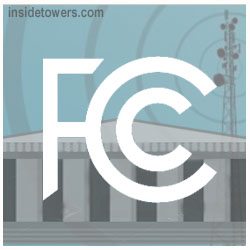
A key part of the twilight towers fix the FCC plans to vote on December 14, would treat these towers similarly to older towers that are already excluded from historic review process. To codify the change, the Advisory Council on Historic Preservation is adopting a “Program Comment” document.
Routine historic preservation review of Twilight Towers is likely to provide little benefit, according to the FCC. “Twilight Towers have been in place for 12 to 16 years. In the vast majority of cases, no adverse effects from these towers have been brought to the FCC’s attention,” the agency states in its draft. Further, the Commission wants to make more towers available for broadband deployment.
The FCC would seek comment on potential procedures for allowing co-locations on Twilight Towers. Comments to WT Docket No. 17-79 would be due 30 days after Federal Register Publication. Under the proposal, an antenna can be mounted on a Twilight Tower without that co-location subject to historic preservation review unless:
(1) The mounting of the proposed antenna on the tower would increase the existing height of the tower by more than 10%, or by the height of one additional antenna array with separation from the nearest existing antenna not to exceed twenty feet, whichever is greater, except that the mounting of the proposed antenna may exceed the size limits set forth in this paragraph if necessary to avoid interference with existing antennas; or
(2) The mounting of the proposed antenna would involve the installation of more than the standard number of new equipment cabinets for the technology involved, not to exceed four, or more than one new equipment shelter; or
(3) The mounting of the proposed antenna would involve adding an appurtenance to the body of the tower that would protrude from the edge of the tower more than twenty feet or more than the width of the tower structure at the level of the appurtenance, whichever is greater, except that the mounting of the proposed antenna may exceed the size limits set forth in this paragraph if necessary to shelter the antenna from inclement weather or to connect the antenna to the tower via cable; or
(4) The mounting of the proposed antenna would involve excavation outside the current tower site, defined as the current boundaries of the leased or owned property surrounding the tower and any access or utility easements currently related to the site; or
(5) The tower has been determined by the FCC to have an adverse effect on one or more historic properties, where such effect has not been avoided or mitigated through a conditional no adverse effect determination, a Memorandum of Agreement, a programmatic agreement, or a finding of compliance with Section 106 and the Wireless Facilities NPA; or
(6) The tower is the subject of a pending environmental review or related proceeding before the FCC involving compliance with Section 106 of the NHPA; or
(7) The co-location licensee or the owner of the tower has received written or electronic notification that the FCC is in receipt of a complaint from a member of the public, a Tribal Nation or NHO, a SHPO, or the Advisory Council that the collocation has an adverse effect on one or more historic properties. Any such complaint must be in writing and supported by substantial evidence describing how the effect from the collocation is adverse to the attributes that qualify any affected historic property for eligibility or potential eligibility for the National Register.
November 27, 2017




Reader Interactions